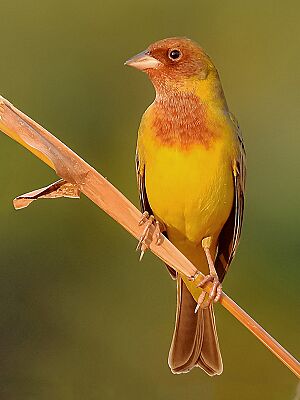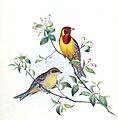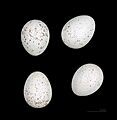Red-headed bunting facts for kids
Quick facts for kids Red-headed bunting |
|
|---|---|
 |
|
| E. bruniceps Mangaon, Maharashtra, India |
|
| Conservation status | |
| Scientific classification |
The red-headed bunting (Emberiza bruniceps) is a colorful bird that lives in open plains. It belongs to the bunting family, Emberizidae. Many people call it a golden yellow bird because of its bright colors.
Contents
What is a Red-Headed Bunting?
This bird is about 17 centimeters (6.7 inches) long. That's a bit bigger than a reed bunting. It has a long tail. The male red-headed bunting is very striking. It has bright yellow feathers on its belly. Its back is green, and its face and chest are a brownish-red color.
How to Identify Male and Female Buntings
The female red-headed bunting looks a bit like the male, but her colors are not as bright. Her belly is paler yellow. Her back is a grey-brown, and her head is greyish. Young birds look similar to the females. It can be tricky to tell them apart from young black-headed buntings.
What Does a Red-Headed Bunting Sound Like?
When a male red-headed bunting sings, it usually sits on a high branch. Its song is quite jerky. It sounds like "sweet-sweet-churri-churri-churri."
Where Do Red-Headed Buntings Live?
Red-headed buntings breed in central Asia. This includes countries like Afghanistan, Iran, Kazakhstan, Kyrgyzstan, Mongolia, Russia, Tajikistan, Turkmenistan, Uzbekistan, and China.
Do Red-Headed Buntings Migrate?
Yes, these birds are migratory. This means they travel long distances. They spend their winters in warmer places like India and Bangladesh.
What Kind of Habitat Do They Like?
Red-headed buntings prefer open areas with lots of bushes and small trees. They also like to live in farmland.
Life Cycle and Diet
These birds build their nests in trees or bushes. The female usually lays three to five eggs.
What Do Red-Headed Buntings Eat?
Their main food is seeds. However, when they are feeding their young, they mostly eat insects. Insects provide important protein for growing chicks.
Images for kids






